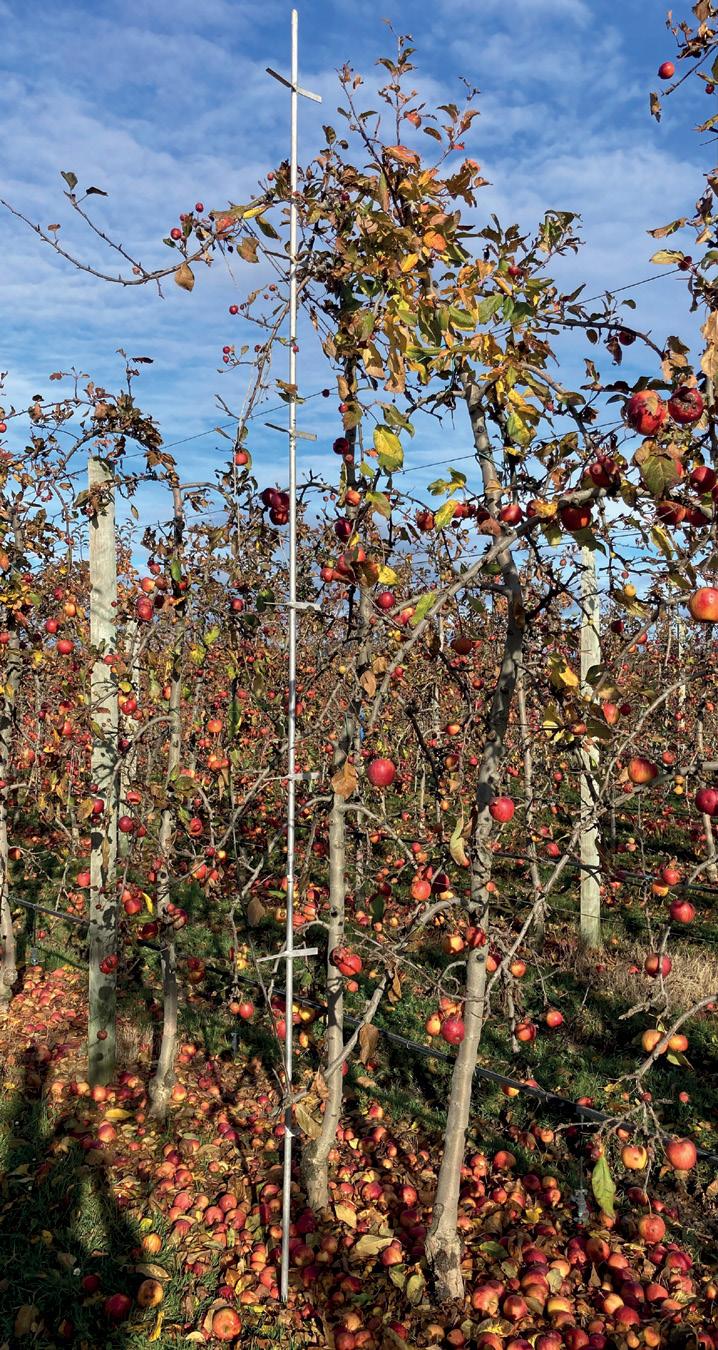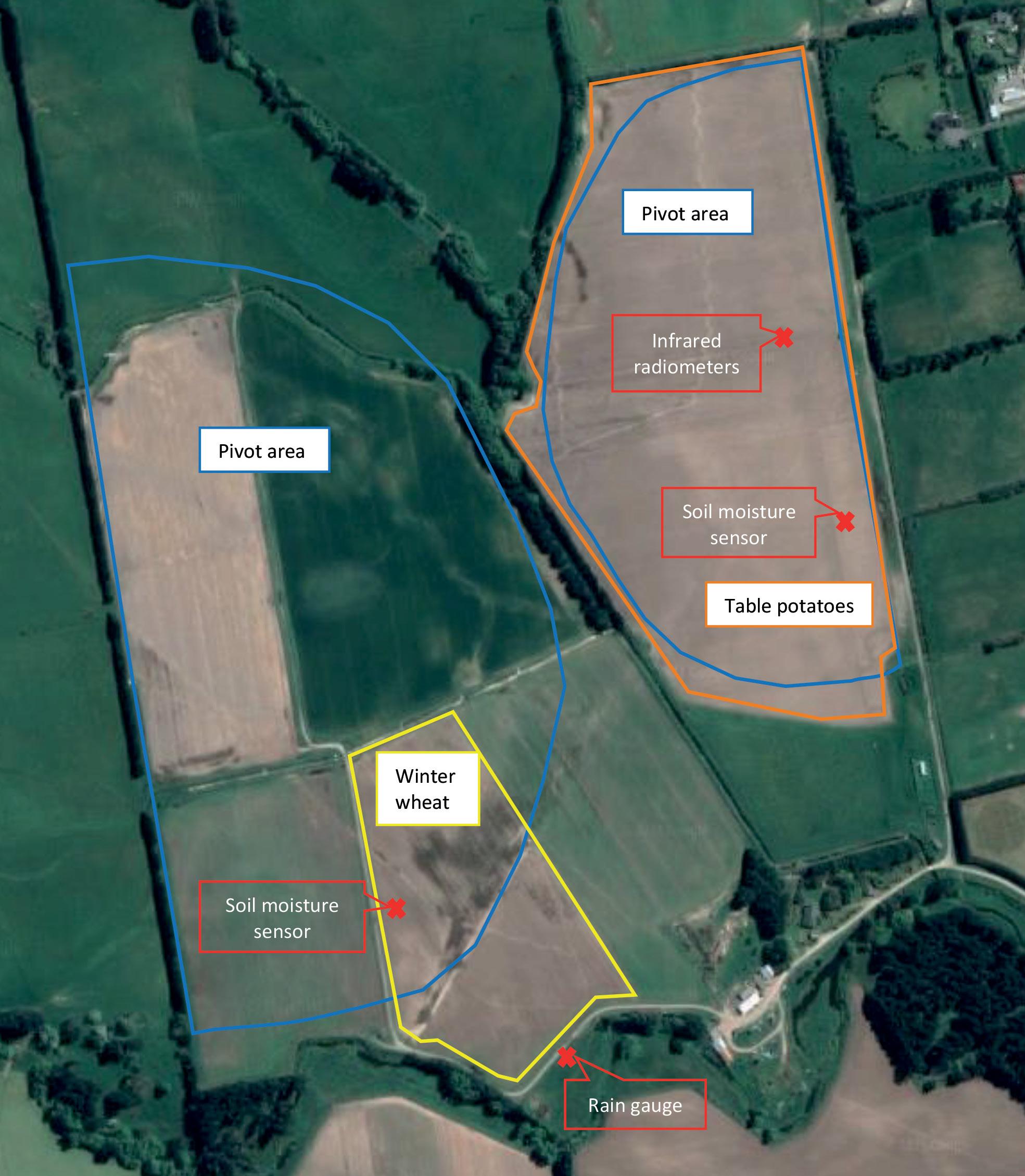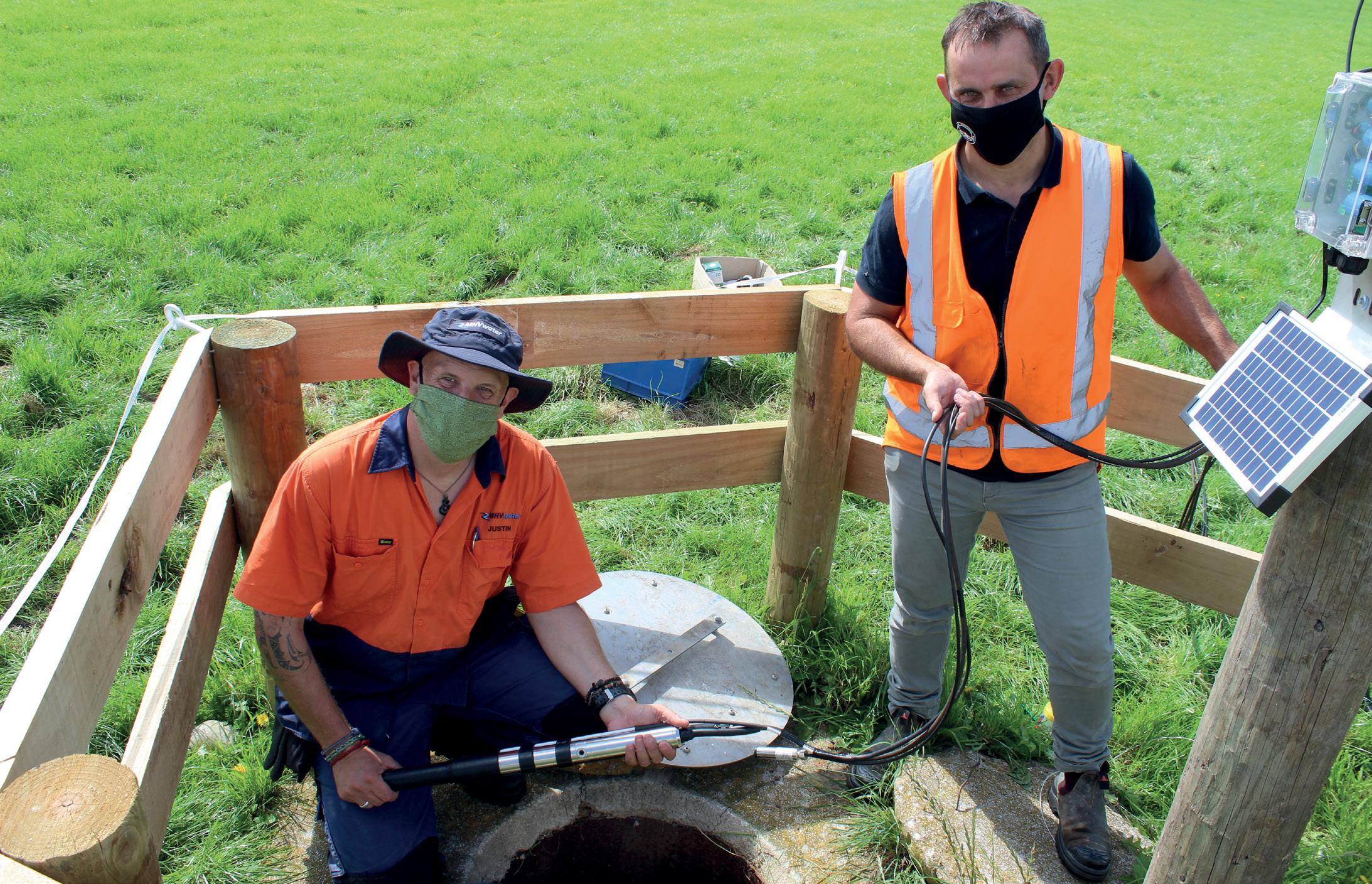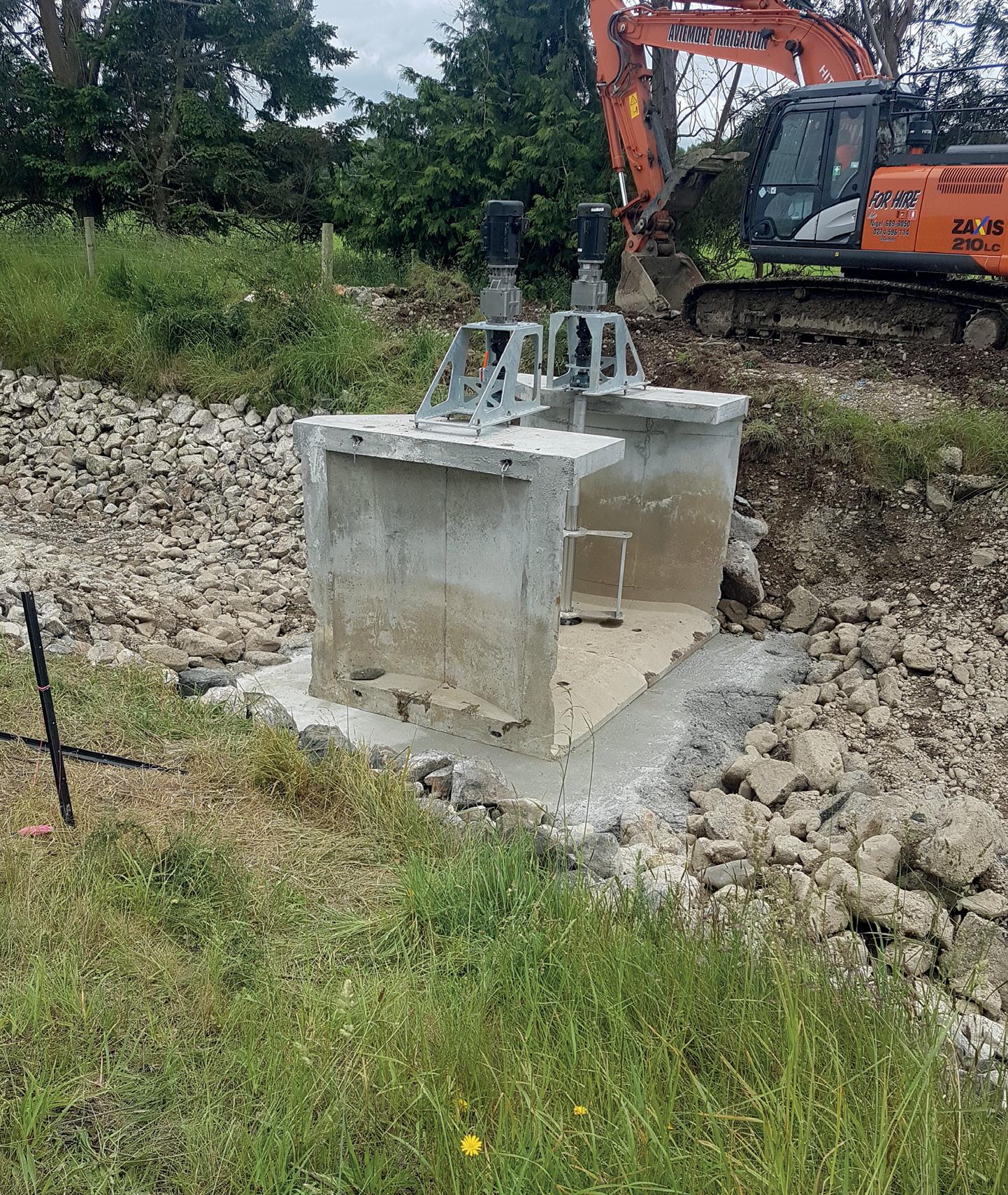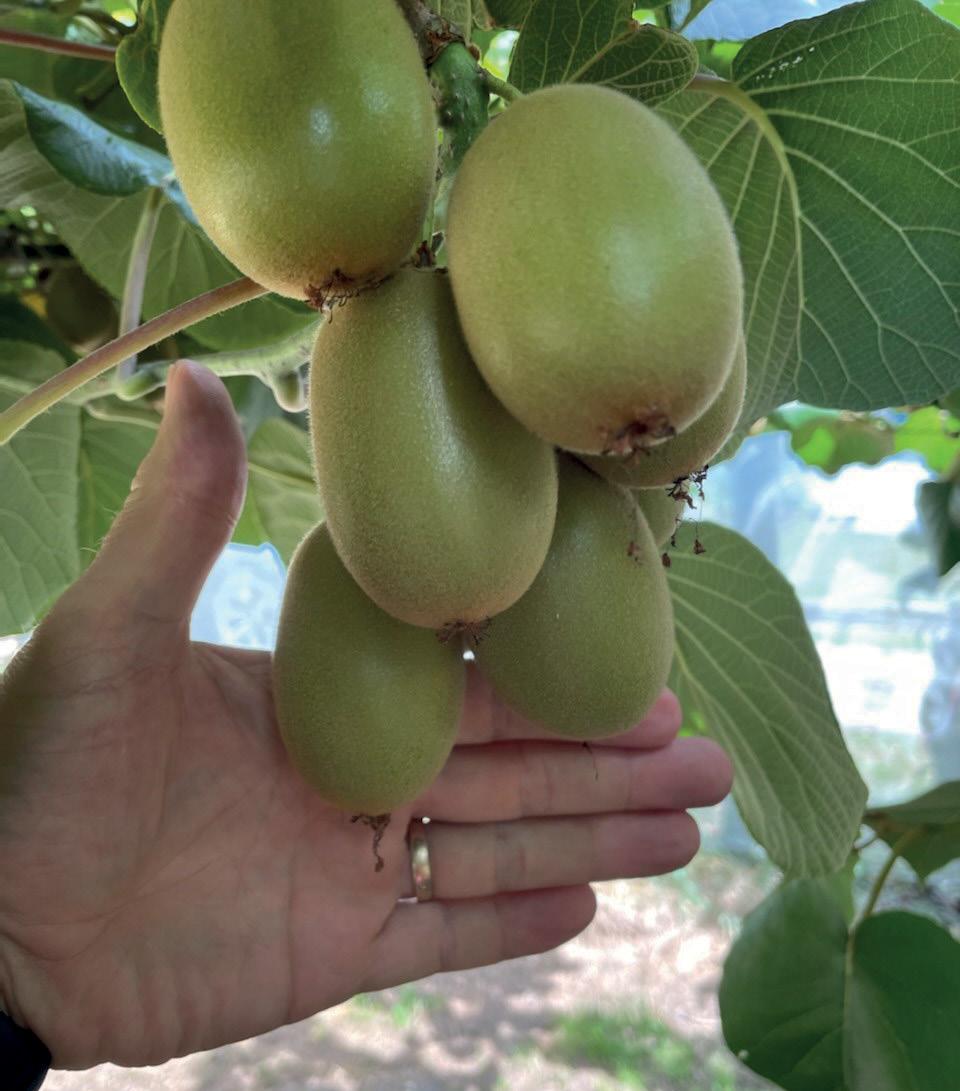
4 minute read
IrrigationNZ Partner: Anderson
regional council representatives about the availability of water in your catchment area, and whether there is a realistic possibility of gaining a consent for water that you require. If the consented volumes are limited, then you need to consider water storage options such as tanks or ponds.
What has been one of your biggest achievements/most important learnings associated with kiwifruit irrigation development?
Advertisement
One of the biggest take-aways from working in kiwifruit irrigation is that you are only seeing half of the picture when looking above the ground. You start to understand so much more about your vines once you can see what is going on with the root system. Continuous soil moisture monitoring technology allows us to pinpoint root activity at different depths, identify when the vines experience the onset of stress, and monitor movement of nutrients throughout the soil profile. Soil moisture monitoring is a valuable tool for any grower to consider when contemplating irrigation.
Do you have opinions on how changes in the local climate will impact your irrigation system decisions, establishment, and operations?
For all regions growing kiwifruit, we know that climate change is resulting in more intense periods of rainfall but also extended drought. For years the Bay of Plenty has considered 90mm average monthly rainfall something to be relied on. Furthermore, our good soils have meant that the rainfall is held in the soil for plant use. Reliable rainfall is no longer the case. As a result, growers need to consider irrigation systems that will meet the needs of their plants during periods of extended dryness. Where consented water volumes are limited, this may mean relying on water storage systems. Drill and drop probe for soil monitoring.
Technology for efficient irrigation management

New Amiad Mini Sigma
Advanced automatic self-cleaning filter. Lightweight and durable with maximum installation flexibility Eliptix Control Valves
Innovative oval flow path for accurate flow control and pressure regulation GSI Pro Fertijet Injector
Web-based control of irrigation, filter flushing and multi-channel fertigation D5000 AS CX Dripline
A long-term, safe and non-leaching solution to reduce root intrusion
To find your local dealer contact Water Supply Products: Auckland: 09-916 0094 Christchurch: 03-348 1293 info@watersupply.co.nz www.watersupply.co.nz
Keep up to date with rule changes that affect you

Several new national and regional rules regarding land use came into force last year, and more will be implemented in 2022. As the regulator responsible for compliance in Canterbury, we want to help you ensure you are up to date with what needs to be done.
We know that these changes can cause confusion and stress, so we’re working to make understanding and implementing them as easy as possible. Our website is the best place to learn more about what you need to do to ensure your farming operation is compliant, as well as to learn more about mitigating your impact on the environment. The following are some of the key areas to watch.
Interim Overseer solution in place
Last year, the Government released a review into the use of Overseer, indicating that it should not be used as the only way to measure nutrient loss from farms. As a result of the review, we have changed how auditors determine compliance with a farm’s nitrogen loss limit. Our new approach reduces the dependence on Overseer and puts more emphasis on changes to the farming system and the likely impact of those changes on nitrogen losses to water. In many cases, farmers will no longer be required to have a current Overseer nutrient budget available for the FEP audit. Auditors are already working under the guidance of this interim solution.
This interim solution allows us to keep working within our current regulatory framework without compromising water quality. We call it an interim solution because will last until a new Land and Water Plan is notified in 2024.
Find out more at ecan.govt.nz/overseer
On 17 November 2021, we adopted a report and recommendations from the Independent Hearings Panel on Plan Change 7 to the Canterbury Land and Water Regional Plan (LWRP). When appeals on specific points of Plan Change 7 are resolved, Council will make PC7 operative. Plan Change 7 includes a wide range of new or amended rules, some of which apply across Canterbury, while others apply only in the Waimakariri and Orari Temuka Opihi Pareora (OTOP) zones. Under these changes, some farms in Waimakariri and OTOP will be required to further reduce their nitrogen losses and to exclude stock from more waterbodies.
Under the Essential Freshwater package, we are required to notify a new regional plan 2024, but this plan will not take full effect for several years after that. This means that the new rules under Plan Change 7 will be relevant for some time.
Find out more at ecan.govt.nz/change-7
Explaining the Essential Freshwater package
The Government’s Freshwater package has introduced several new pieces of legislation that are designed to reverse the trend of degradation of our rivers, lakes, streams and groundwater sources. As a regional council, we are responsible for helping you implement these. To help you out, we’ve launched a new section on our website’s Farmers’ Hub, designed to explain just what you will need to do, and when. It’s broken down by topic, and has advice on meeting the synthetic nitrogen cap, managing wetlands, stock exclusion, water metering and more.
For details on the specific topics and what rules apply to you, visit the Essential Freshwater section of the Farmers’ Hub: ecan.govt.nz/farmershub



